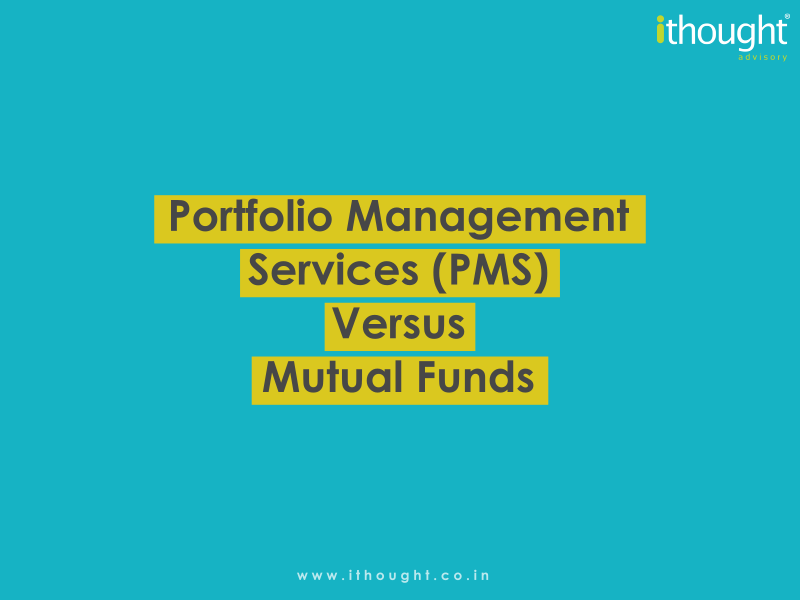
Investment and portfolio management
In recent times, various avenues have stemmed for investors to park their money and grow their wealth in a sustained manner. For the longest time, mutual funds have been the most common avenue. However, in the past few years, sophisticated investors are looking away from mutual funds. They are moving towards more niche, customised and differentiated approaches to investment management. Portfolio management services (PMS) cater to this need. Investors need to understand the key differences between a mutual fund and a PMS before deciding which investment vehicle is more suitable for them.
How a portfolio management service works
Portfolio management services typically constitute a model wherein the fund manager manages investors’ money and charges a fee for the same. Portfolio management services can be discretionary or non-discretionary.
- Discretionary portfolio management services:
Under this model, the fund manager has the decision-making authority on stock selection and fund construction. There is no involvement from the investors’ end. - Non-discretionary portfolio management services:
In contrast, a non-discretionary model would constitute the fund manager advising investors on stock selection. But, the ultimate decision making lies with the investor.
How a mutual fund works
A mutual fund is a type of financial vehicle made up of a pool of money collected from many investors. The investments a mutual fund can make are guided by the fund’s investment mandate and objective. Investors can purchase units of these funds and each unit derives its value from the underlying securities.
A mutual fund and portfolio management service may look similar on the surface. But they differ with respect to a variety of points listed below:
Fee Structure
Portfolio management services can typically charge – a fixed management fee charged on the amount invested (AUM), a performance fee (on profits earned), or a combination of both. While charging performance fees, some PMS only charge the investor if the fund has delivered returns beyond a pre-determined benchmark or hurdle.
Mutual funds in regular plans charge a fixed fee to investors usually ranging from 1.5% -2% on AUM in equity mutual funds.
While most PMS strategies charge a higher fee than mutual funds, there are some PMS whose fee component is on par with that of a mutual fund (regular plan).
Customised investment option
Certain portfolio management services have a fair degree of portfolio customisation based on the time an investor enters the scheme. Each portfolio is constructed separately based on market situations when investments are commenced.
Mutual funds do not offer customised investment options for each investor. Investors are allotted units of the fund at the prevailing price and each unit holds the same securities held in the fund.
Minimum investment
SEBI regulations have set Rs 50,00,000 as the minimum ticket size for an investor in a PMS. In contrast, most mutual funds accept investments from Rs 1,000.
Taxability
PMS require investors to pay taxes in the same manner as they would if they bought the shares on their own. A PMS typically does not pay taxes on behalf of the client. Instead, they provide a statement of capital gains they have incurred on the client’s behalf in the given year. Whereas in a mutual fund, an investor is liable to pay the required taxes on redeeming their investment.
Asset Holding
SEBI issued a circular regulating how mutual funds are classified. Funds can be classified based on their management style or holdings. SEBI also defines the universe within which a large, mid or small-cap mutual fund may invest in. This can tend to be restrictive for fund managers as they may not always be able to leverage certain market capital segments by switching their allocation.
Portfolio management services have a pre-determined mandate which defines their universe of investments. This mandate is set at the portfolio manager’s discretion which allows them to set a wider scope of investment as compared to mutual funds. SEBI allows portfolio managers to curate strategies that invest even in unlisted equity securities subject to a ceiling. Equity mutual funds, on the other hand, can only invest in listed or to-be listed securities.
Risk Management
Both mutual funds and PMS bear a certain degree of risk with respect to the asset class they invest in and strategy followed by them. The portfolio manager is expected to disclose to investors, all possible risk factors and conditions that the portfolio is exposed to.
Mutual funds offer greater liquidity ease as compared to a PMS. Most mutual funds do not have a lock-in period and exit loads are charged only for the first year. In contrast, some PMS schemes might have a lock-in period and exit loads tend to be on the higher side as compared to a mutual fund. Settlement time varies from T+1 to T+3 across the mutual fund industry. PMS may have longer settlement times that can go up to a week.
Equity PMS that invest in unlisted securities or low volume traded companies may have an added layer of liquidity constraint in terms of finding a buyer for their holdings at the time of redemption.
PMS has a higher degree of transparency as compared to mutual funds with relation to the holdings as the investment lie in the individual’s Demat and the entire portfolio can be viewed easily.
Mutual fund portfolios typically invest in a higher number of stocks than an average PMS would, thus making PMS exposed to concentration risk.